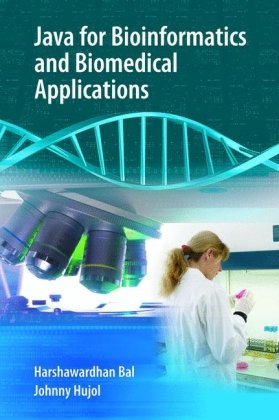

Most ebook files are in PDF format, so you can easily read them using various software such as Foxit Reader or directly on the Google Chrome browser.
Some ebook files are released by publishers in other formats such as .awz, .mobi, .epub, .fb2, etc. You may need to install specific software to read these formats on mobile/PC, such as Calibre.
Please read the tutorial at this link: https://ebookbell.com/faq
We offer FREE conversion to the popular formats you request; however, this may take some time. Therefore, right after payment, please email us, and we will try to provide the service as quickly as possible.
For some exceptional file formats or broken links (if any), please refrain from opening any disputes. Instead, email us first, and we will try to assist within a maximum of 6 hours.
EbookBell Team

0.0
0 reviews
ISBN 10: 0387372377
ISBN 13: 9780387372372
Author: Harshawardhan Bal; Johnny Hujol
April 2006 Introduction Bioinformatics is at a crossroads. We work in a field that is changing every day, increasingly moving from specific solutions created by single researchers working alone or in small groups to larger, often geographically dispersed programs enabled by collaborative computing and open software. This book represents an important development, giving the reader an opportunity to discover how the use of open and reusable Java code can solve large bioinformatics problems in a software engineered and robust way. I work with one of the authors of this book every day, on the National Cancer Institute's cancer Biomedical Informatics Grid (caBIG™) project, and I can attest that they are well suited to share with their readers both their experience in the development and use of bioinformatics software, as well as their interest in solid software engineering and interoperability. Background and history In its short history, bioinformatics has become an increasingly important part of how scientists involved in biological research go about their work. This has lead to an explosion of interest in the subject, and a similar explosion in tools and data resources for researchers to learn and use in their work. Historically, tools for bioinformatics have been idiosyncratic and are custom-developed by the end-users (or those close to them) in an iterative fashion until the specific immediate problem is solved. This has led to a balkanization of informatics systems, sometimes yielding multiple, incompatible systems at a single institution for a single application.
Introduction to Bioinformatics and Java
Introduction to Basic Local Alignment Search Tool
Running BLAST using SwingBlast
Facilitating PubMed Searches: JavaServer Pages and Java Servlets
Creating a Gene Prediction and BLAST Analysis Pipeline
cancer Biomedical Informatics Grid (caBIG™)
java for bioinformatics pdf
java bioinformatics
java in biology
ms in bioinformatics and computational biology
java and bioinformatics
Tags: Harshawardhan Bal, Johnny Hujol, Bioinformatics, Biomedical